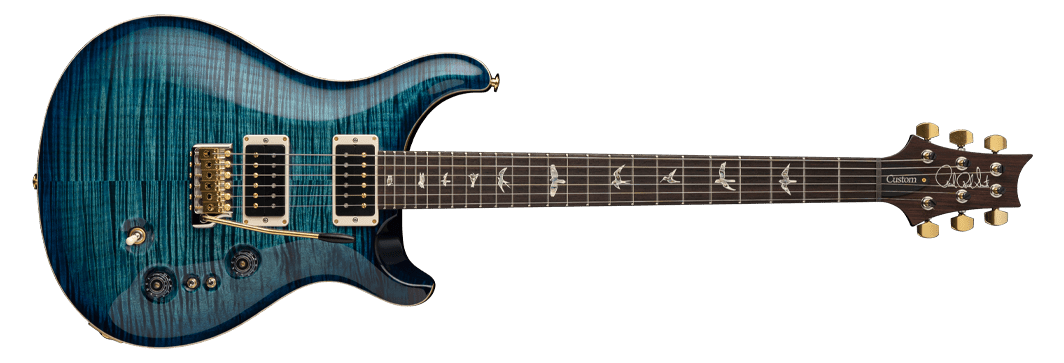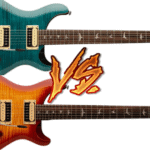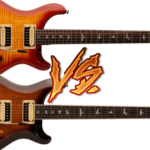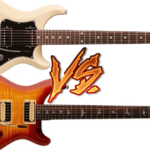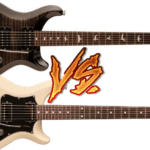You’re about to enter into the PRS world but the model names and the denominations are making you crazy.
Trust me, I’ve been there.
But don’t worry, be sure that whether the model you choose you’ll be getting an amazing piece of gear. There are no bad PRS guitars, period.
If you want the short answer to this question, here it is:
The main difference between PRS Custom vs Standard models is that PRS Customs have a mahogany body with a maple top while PRS Standards have a completely mahogany body. This results in a more “scooped” tone for the custom, where the low and high end is more prominent, while the Standard’s tone has more mids.
In this article, we will discuss the main differences between PRS Customs and Standards. First, we will talk about what’s the effect of the number of frets in the tone. Then, we will talk about each of these 2 iconic models and their features.
After that, we will define what are their main differences.
Finally, we will give you our insights into which one you should choose.
Let’s get started!
What’s the difference between 22 and 24 frets on a PRS guitar
You might have seen that there are PRS models, across their different instrument lines and production years called Custom 22, Custom 24, Standard 22, and Standard 24. That number, either 22 or 24 is the number of frets they have.
But why should you care about the number or frets you might ask….
Well, not always the more the better. It depends.
At first, having 2 extra frets might be useful for playing the music you intend to, and that’s great. But if you don’t plan on going that further down the fretboard why should you care? Maybe it’s more comfortable for you to have only 22 frets, and that’s alright.
However, there’s more to this.
The main difference between PRS 22 and 24 models is that in a 24 fret guitar, the neck pickup is displaced towards the bridge around an inch. This changes the resulting tone of the neck position pickup, being something in between a traditional middle pickup and a neck pickup.
This is not a good or a bad per se. It just means that you won’t get the exact same tone as you might hear in a record where a neck humbucker pickup was played.
It will differentiate you from this traditional sound, and that might be great for you.
Main characteristics of the PRS Custom
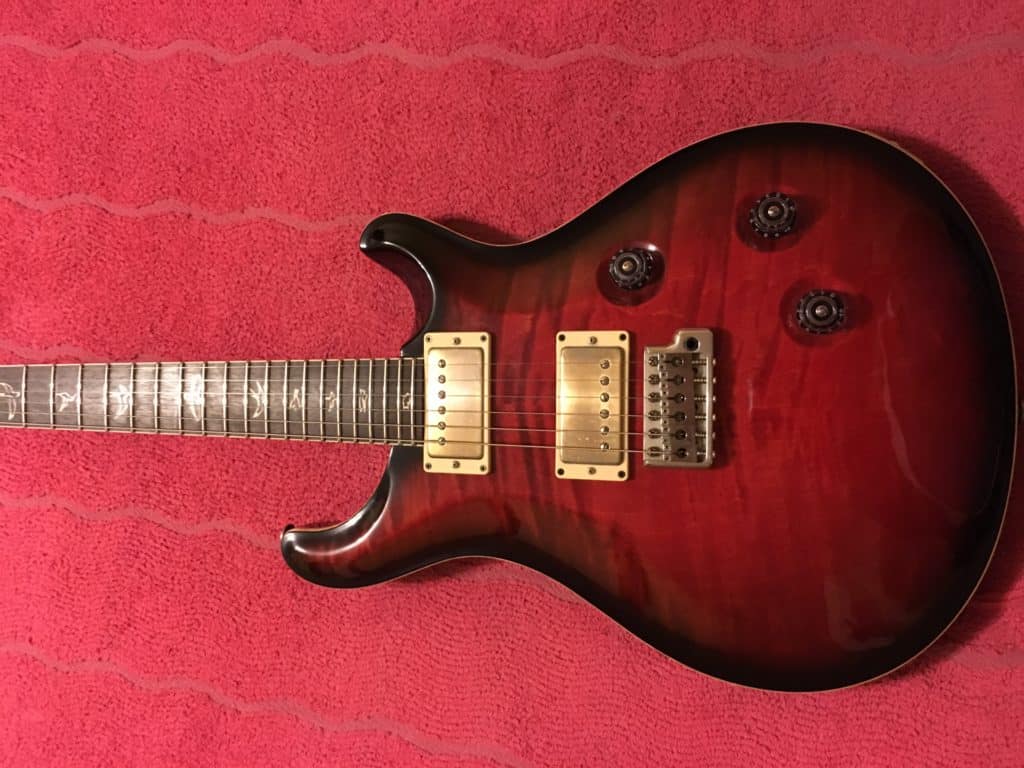
The PRS Custom is the brand’s staple guitar. It was always present in their lineup and it’s what many of us think about when they imagine a PRS.
It’s usually available with 22 or 24 frets, and it rocks two humbucker pickups.
The Custom’s body is made of mahogany, with a maple top. Its neck is also mahogany and its fretboard is made of rosewood.
Note: The above is not valid for the SE line, since the SE Custom 24 has a maple neck.
Having a maple top is surely the main characteristic of the Custom lineup. This gives these guitars a distinctive mid-scooped tone with a more prominent low and high end.
Paul Reed Smith himself is a firm believer that guitar tones have to do with some kind of subtractive synthesis, where the tonewoods subtract from the original resonance of the strings in certain parts of the frequency spectrum.
Clearly, the maple top performs this subtraction in the mid-range.
Main characteristics of the PRS Standard
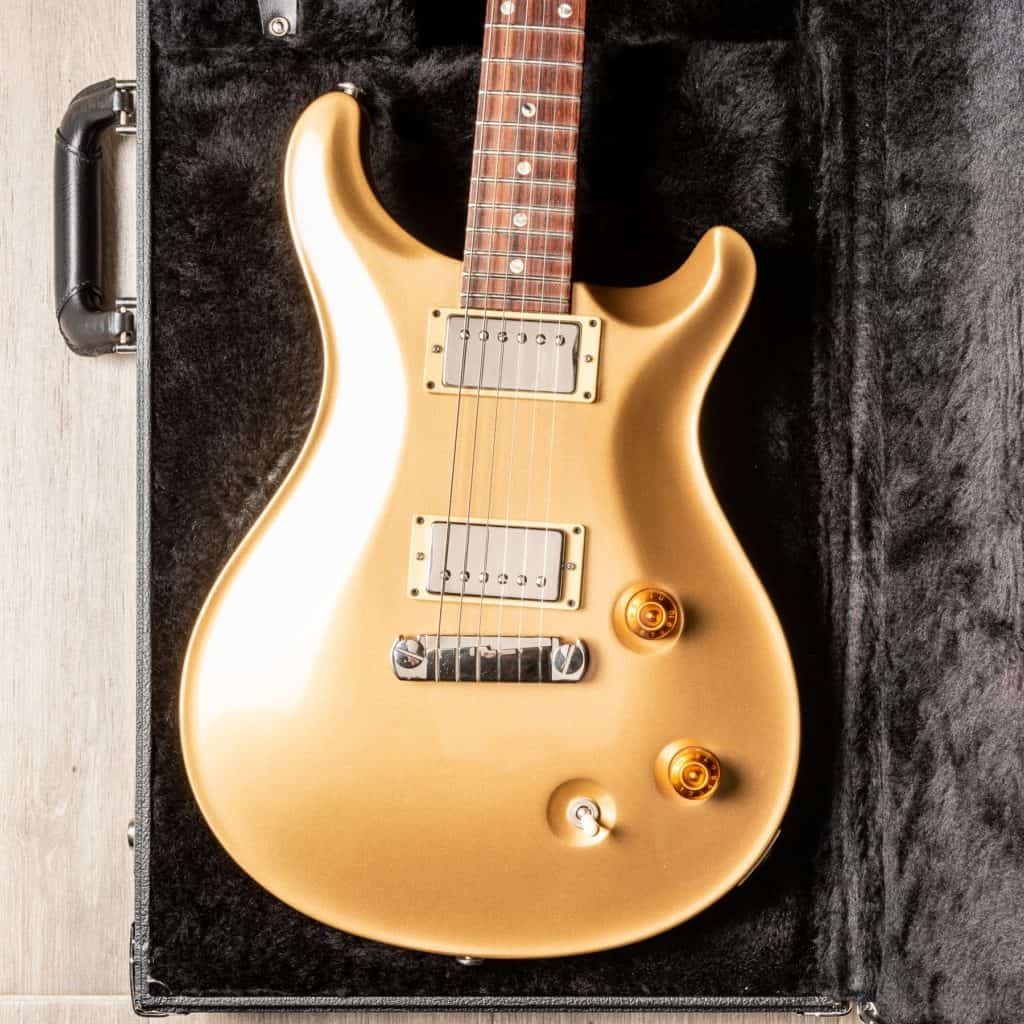
The PRS Standard is another of PRS staples and maybe a less baroque-looking instrument.
This more down-to-earth, minimalistic look is given by its having a completely mahogany body.
In some models, the Standards might be comprised of only 2 woods: mahogany for the body and neck, and rosewood for the fretboard.
Note: For the current SE lineup, the Standard’s neck is maple.
Having a full mahogany body gives this model a tone where mids have more presence. It’s another flavor of an amazing thing, although subtle.
This wealth in mids makes the Standard an excellent soloist guitar.
Main differences between the PRS Custom and the Standard
As we debated earlier there have been not many differences between the PRS Custom and Standard through the years.
Their main difference lies in their tonewoods with the Custom having a maple top and the Standard’s body being completely mahogany.
The maple top, apart from the looks scoops the Custom’s mid-range, while the Standard’s remain untouched.
In the end, it’s all a matter of taste. Some will hear the differences and some will not.
It’s amazing, although, that PRS chose to differentiate two of its most iconic models just by including or not including some different kind of wood into the mix.
Other manufacturers would have doubt about if that distinction is strong enough, and surely would have ended up throwing some other more explicit variations.
PRS did not.
PRS SE Custom vs PRS SE Standard
The main difference between the PRS SE Custom and the PRS SE Standard is that the Custom has a maple top that gives it a more mid-scooped tone, while the SE Standard has a completely mahogany body and thus a better output in mids.
Which one should you choose?
In GearAficionado we don’t like to tell you what to do.
We always encourage our readers to try out the gear and make conclusions on their own.
Choosing a piece of gear is a very personal matter and nothing you read in a blog post or see on a YouTube video will be final.
We encourage you to experience the feel and the sound of each one of these models for yourself.
However, we are happy to give you some insights into what you might look for:
- If you want a modern instrument with a classic sound, pick either of the 22 fret models
- If you want a guitar with a distinctive sound, try out a 24 fret PRS
- If you like mid-heavy tones, check out the PRS Standard
- If you prefer a more scooped tone profile, give the PRS Custom a shot

Hello there, my name is Ramiro and I’ve been playing guitar for almost 20 years. I’m obsessed with everything gear-related and I thought it might be worth sharing it. From guitars, pedals, amps, and synths to studio gear and production tips, I hope you find what I post here useful, and I’ll try my best to keep it entertaining also.

